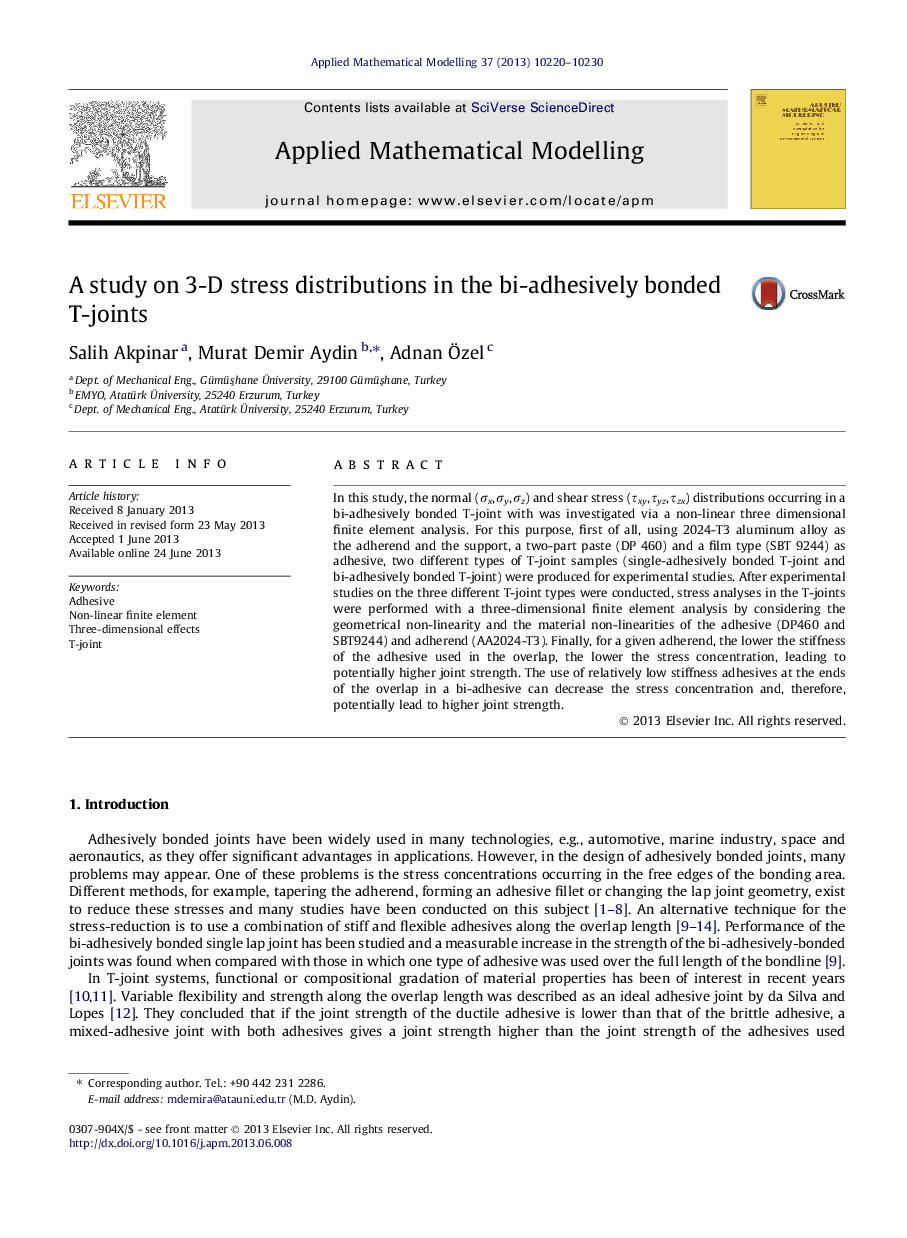| Article ID | Journal | Published Year | Pages | File Type |
|---|---|---|---|---|
| 1704061 | Applied Mathematical Modelling | 2013 | 11 Pages |
In this study, the normal (σx, σy, σz) and shear stress (τxy, τyz, τzx) distributions occurring in a bi-adhesively bonded T-joint with was investigated via a non-linear three dimensional finite element analysis. For this purpose, first of all, using 2024-T3 aluminum alloy as the adherend and the support, a two-part paste (DP 460) and a film type (SBT 9244) as adhesive, two different types of T-joint samples (single-adhesively bonded T-joint and bi-adhesively bonded T-joint) were produced for experimental studies. After experimental studies on the three different T-joint types were conducted, stress analyses in the T-joints were performed with a three-dimensional finite element analysis by considering the geometrical non-linearity and the material non-linearities of the adhesive (DP460 and SBT9244) and adherend (AA2024-T3). Finally, for a given adherend, the lower the stiffness of the adhesive used in the overlap, the lower the stress concentration, leading to potentially higher joint strength. The use of relatively low stiffness adhesives at the ends of the overlap in a bi-adhesive can decrease the stress concentration and, therefore, potentially lead to higher joint strength.
